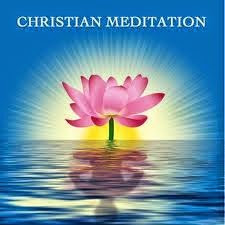Surrender, from the context of which I am writing, does not mean “giving up.” It means “letting go;” more specifically, letting go of something of lessor value in order to attain something of greater value.
This notion of surrender has an important significance in Christian Meditation, a prayer discipline I have followed for many years. The rules for this discipline are based on the premises of silence, stillness, and simplicity. Learning to meditate is learning to “let go” of your thoughts, ideas and imagination and to rest in the depths of your own being. The Inner Divine cannot be accessed through one’s own willful striving. Just as we cannot extinguish a fire by using fire, we cannot transcend the ego by using the ego. So we wait in silence and stillness, repeating our mantra until the wall of the ego is relaxed and transcended. This involves a surrender of the exterior false self with all of its self-definitions (I am this, I am that) to discover that which exists beyond “self.” For me, this transcendent experience was a dissolving of the “I” into a shimmering blissful lake of Divine light.
The fourteenth century Christian mystic, Ruysbrock, describes surrender in this way.
- Believe and accept through Grace that the God dwells within, and therefore turn within to discover and expect to find God dwelling within you.
- Be diligent to rid yourself of all distracting thoughts, images and attachments of the heart to any created being or thing, to escape into God. Guard your outward senses from all worldly attractions which cling so easily, to be carried away in union with God.
- Freely turn your will towards God so that your whole being is absorbed and directed by His presence - body, mind and spirit — in complete dependence and submission.
- Acknowledge your inability of doing this on your own. Only in faith is this possible. So surrender to God, and allow your souls to be over-powered and absorbed into oneness with Him.
It is intentional: It is the result of the free and unencumbered use of one’s will. It is a free choice, never forced or compelled in any way.
It is conscious: One is wide awake and aware of everything that is happening at the time of surrender. There is no dullness or robotic mindlessness.
It involves responsibility for the consequences as well as for the act itself: We are willing to accept the full consequences of whatever may result from the surrender. We let go of ego involvement in the desire to surrender. We accept the consequences of "letting go" even if it may appear to have a negative result.
It is not directed toward any fully known object: Thus it cannot in anyway be a means of furthering one’s self-definition or self-importance. It must be directed toward that which exists beyond all images and concepts.
It represents a willingness to engage the fullness of life with the fullness of oneself: It cannot be an escape or avoidance. It must be a “yes” rather than a “no.” We are intentional in our desire for fullness.
So what has all this to do with Kundalini?
From my experiences with Christian Meditation and Kundalini, both involve a surrender; a letting go. Other than that, they are very different.
How are they different?
First of all, it was my involvement with Christian Meditation that triggered the beginnings of Kundalini. Christian Meditation is a prayer discipline to encourage letting go of our physical, intellectual and sensing activities that connect and identify us with the exterior world in order to transcend ego and bring us in touch with the inner Divine Presence often referred to as the True Self.
Kundalini, on the other hand, is a release of energy from the base of the spine that relentlessly moves through the physical and subtle bodies with its own intelligently motivated agenda. This agenda is to bring all aspects of the human metabolism (both physical and subtle) into a state of wholeness. This energy does this through a process of renovating the physical and subtle bodies to modify or remove anything that may be an obstacle to wholeness. Kundalini discerns its own path and method, separating the wheat to be kept from the chaff to be modified or destroyed. This modification will include all or many of our false beliefs, values and assumptions, even those which were previously important to us.
Once the Kundalini process has begun, we must surrender to the process. All of the qualities of surrender stated above (Gerald May) apply to Kundalini. I understand from my reading that any resistance to Kundalini’s agenda once triggered will only result in suffering and hardship. Since I had no knowledge of Kundalini at the time of its rising, I assumed it was a spiritually renewing event triggered from my intense meditation. So I embraced it fully despite some discomfort and confusion that resulted at the time. I surrendered to it as I had surrendered to my meditation discipline, always with an underlying intuitive knowing that everything was unfolding as it should.
Kundalini often takes us by surprise with radical results. It turns our world up-side down. We suddenly see life differently. I speak for myself when I say that it is very easy to get caught up in the Kundalini phenomena, and become fascinated and attached to the process itself, particularly the freedom and bliss associated with it. I often had to ask myself one very important question: What is the purpose of the Kundalini experience?
The answer that I receive is always the same: So that we may become engaged in the world in a more wholesome and beneficial way.
Kundalini frees us from the dullness and obstacles of past conditioning and traumas. It breaks down the walls of the ego found in the “ahankara” mental sheath, and releases us from those strong attachment to “self” with its rigidity, inflexibility, and tight boundaries. It takes us away from that sense of “being separate” and allows us to see and experience our connection with every living being and thing.
A further surrender to which I am now called is to let go of the fascination and attachment to the Kundalini experience itself and how it has affected me to embrace more fully the life to which it has called me to live.












